Ducks are always in chickens’ shadows when it comes to poultry. Though they’ve been domesticated for ages, the greater productivity of chickens in terms of meat and eggs saw ducks relegated to the specialty market for a long time.
That status is slowly changing today since folks are coming to appreciate the richness of duck eggs, the unique flavor of your meat, and also the fun of keeping ducks.
They tend to be a lot healthier and less vulnerable to some predators compared to chickens, meaning that some homesteaders are coming around on them.
But not all domestic ducks breeds are easy for beginners to keep and handle. All have distinct advantages and disadvantages, and you should know what they are before you commit.
If you’re planning on making a go with ducks, you’ll need to pick the right breed depending on your purposes. To help you get started, I’m bringing you a guide on the best farm duck breeds below.
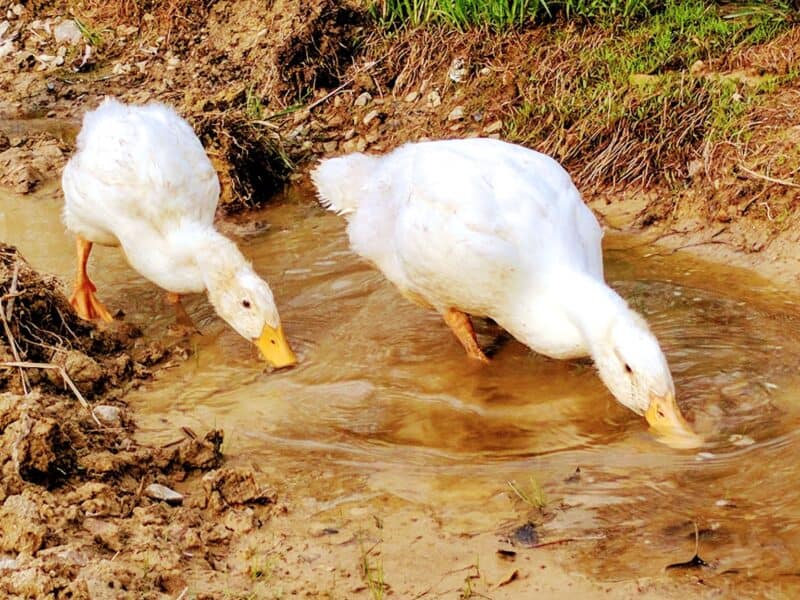
Pekin Duck
You can’t talk about farm duck breeds without talking about the Pekin. Aside from being one of the most ubiquitous domestic ducks kept in the world, and certainly in North America, they’re also the iconic image of what a duck is for many people. Big, pure white, and with bright orange bills, shanks, and feet.
Pekins are large-body ducks, regularly reaching 10 lb in the case of males, and the jumbo variety can grow up to 12 lb or a little heavier, making them the broilers of the duck world.
They’re also steady producers of large eggs, averaging anywhere from 125 to 225 per year, meaning they are a dependable dual-use variety. Pekins are friendly, pretty healthy, and easy to handle, making them the picture-perfect first duck for anyone.
Yet, they don’t live as long as other domestic breeds if you’re planning on keeping them as pets.
Mallard Duck
The most common duck in North America, at least if you count wild and domestic species, is the Mallard.
This is another breed that is a top contender for what might be the most iconic image of a duck, at least as far as the males are concerned: those white neck bands, emerald green heads, and yellow bills atop a mingled buff, brown, and black body is undeniably handsome.
As mentioned, there are domestic and wild Mallards, and concerning the domestic variety this is a much smaller breed but one that’s still quite close to their wild cousins in terms of temperament and behavior.
They’re often standoffish, skittish, and flighty, so clipping wings might be required. They are known for incredibly good health, and yielding rich, flavorful meat although you won’t get much of it from such a small carcass.
They can be used for egg production on a very small scale since their eggs are large for their body size, but they tend not to lay very many: this is because they’re notoriously broody and intent on hatching ducklings!
But, if you want a smaller breed or just an iconic one, Mallards are highly recommended.
Welsh Harlequin Duck
One of the newest domestic duck breeds, only developed in the mid part of the 20th century, the Welsh Harlequin is still rare here in the United States but is rapidly gaining a dedicated and fanatical following. And I’ve got to admit, it’s for a very good reason.
Welsh Harlequins are a superb all-purpose duck, laying as they do a huge quantity of large eggs yearly. Healthy hens can produce anywhere from 275 to 300 or a little more, and can yield that many for the first several years of their lives.
Long-lived, hardy, and extremely resistant even to blistering cold, they’re a great choice for every farmer but come especially recommended if you live in frigid Northern latitudes.
Welsh Harlequins are also a pleasure to interact with, being calm, stoic, and quietly friendly. Raise them right and they will always be happy to see you.
These ducks got their name from their seemingly riotous plumage, being a combination of iridescent blue-gray and black feathers with mingled white and silver feathers. They are immediately recognizable and for this reason also a popular show and pet duck.
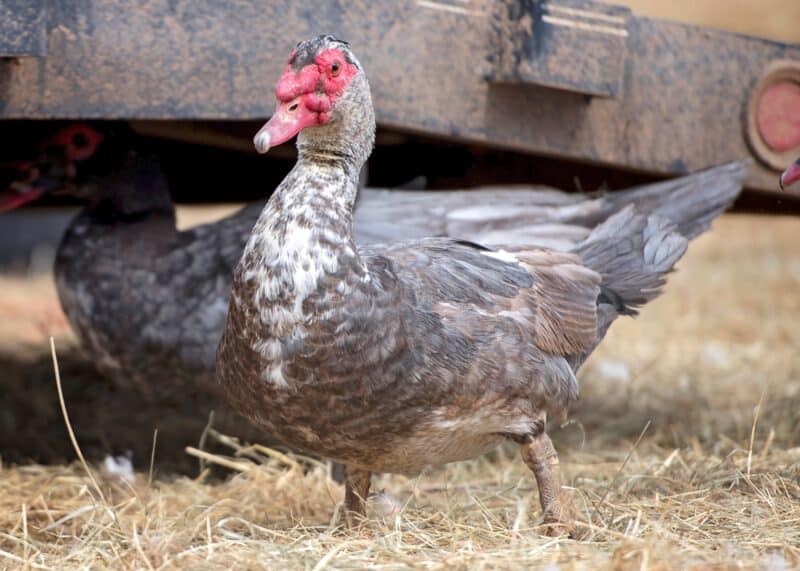
Muscovy Duck
Certainly, the most unique-looking duck on our list, Muscovies have a special distinction from all other domestic breeds. Taxonomically, they’re actually closer to geese and are one of the few breeds that are not directly descended from the wild mallard.
Most of these are big but slender, with an almost athletic build. They’re instantly recognizable from the bright red fleshy growths on their face and, sometimes, their neck. It makes them look a little bit like turkeys.
These growths, known as caruncles, are bigger and bolder on males but subtler on females. This gives them a striking look in conjunction with their usual black-and-white feathering. Muscovies are typically raised for meat, and are famous for both its quality and its strong, intense flavor.
These ducks spend a lot of time on land and they are highly independent and excellent foragers meaning they need less interaction and food from you as long as they have plenty of room to roam and explore.
This is also one of the quietest duck breeds around, so if you don’t want to listen to a lot of noise they might be the perfect choice for you.
Note that wild and domestic Muscovies have intermingled, and depending on their genetics, they might be able to fly so be ready to clip those wings!
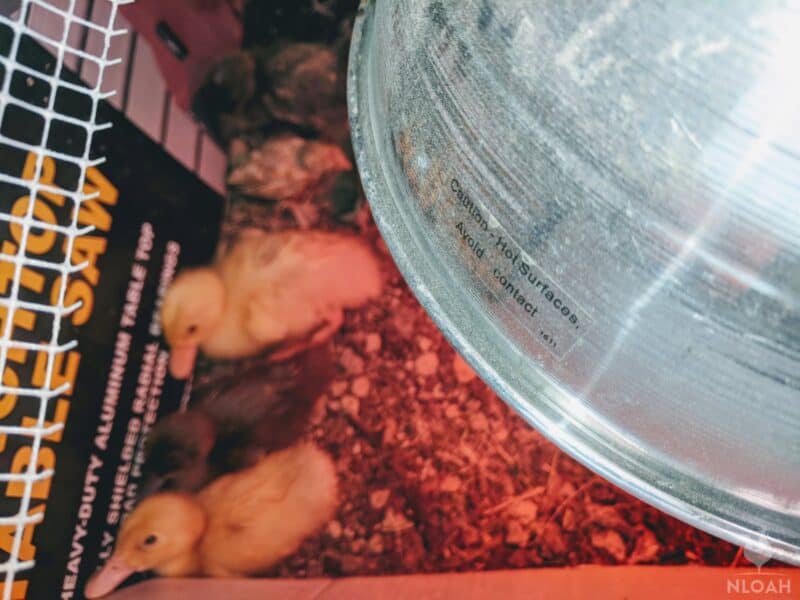
Khaki Campbell Duck
A rightly famous domestic breed, the Khaki Campbell got its name due to its distinctive light tan or chestnut-colored plumage. Males are a little darker with distinctly dark brown heads. Males and females have dark, olive-green bills.
They’re charming, but are often nervous and a little standoffish unless they are raised with lots of human interaction and a gentle hand.
If it is eggs you want, you found the right duck. Khaki Campbells are the best layers in the world, with young and healthy hens routinely cranking out a remarkable 300+ eggs every year. These ducks are remarkably healthy, too, and adaptable to a wide variety of environments.
Although not typically raised for meat, they can do the job in a pinch though carcass yields are significantly less than other larger varieties. Khaki Campells are also very popular competitors at poultry exhibitions…
If you want a highly productive egg layer adaptable to nearly any environment, the Khaki Campbell is probably the right duck for you.
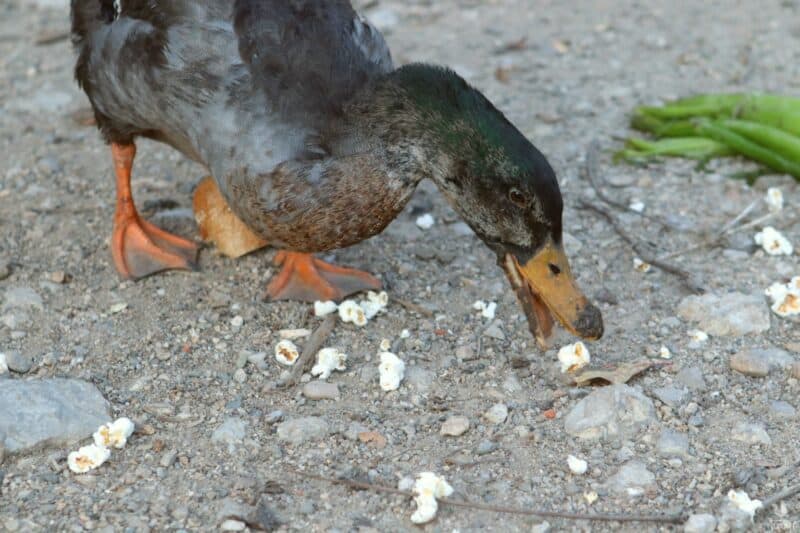
Cayuga Duck
Undeniably one of the most gorgeous ducks that has ever existed, these Mallard descendants are iridescent green, blue, and shimmery black from front to back. This combination is usually referred to as beetle green. Their bills are a dark blue-gray color.
Unbelievably beautiful, the pleasure of owning them is reason enough for most folks, but in case you needed a practical excuse are famous the world over for their delicious, delectable meat and also their fair egg output.
They only manage around 160 to 180 per year, but unlike some other known egg-laying breeds, Cayugas lay large eggs meaning you’ll always have a good haul.
If you want ducks that are good performers in all regards and stunningly beautiful, Cayugas simply cannot be beaten.
Swedish Blue Duck
Another rare domestic breed here in the US that happens to be threatened in most other places around the world, Swedish Blues might just be the perfect domestic duck. They lay around 180 large, pure white eggs per year and produce lean, tender, and flavorful meat.
A winning combo with their famously calm, docile, and friendly temperament, these ducks are notably easy to handle even by the standards of other calm and gregarious domestic breeds.
They’re also known to form close bonds with people, so if you want to keep a flock around mostly for eggs or just as pets, you can hardly do better.
These ducks got their name because of their typical steel blue-gray coloration, but you’ll also find them in black with iridescent patches, white, off-white, and medium gray. Lovely, productive, and friendly: what’s not to love about the Swedish Blue?

Indian Runner Duck
A unique duck that is borderline comical in appearance and behavior, Indian Runners sort of resemble penguins because they stand almost totally upright.
This unique body plan isn’t just a cruel joke of nature, either, because it allows these birds a remarkable ground speed. The name isn’t a lie: they really do run around all over the place!
Despite their somewhat strange body, they are handsome, typically consisting of mingled patterns of brown and white with black patches, orange bills, and orange legs.
This is a high-activity breed that needs lots of room to exercise and forage, but if you can give them that they will give you a huge supply of eggs in return.
Healthy females can lay up to 300 a year, sometimes more, though their eggs are on the small side. Indian Runners can be a fun choice for bigger properties.
Aylesbury Duck
Another big, white duck, this time hailing from England, Aylesburys are often confused with Pekins but they can be told apart by their pale bills, lower, waddling gait, and plump build. Look closely at the bottom of their chest, or keel: it nearly touches the ground, whereas Pekins have better ground clearance.
Aylesbury ducks have particularly heavy feathering and are highly resistant to cold, like Harlequins. This makes them a great utility breed for folks living in cold, wet climates.
They’re best known for their meat but are a fairly popular dual-use breed for homesteaders since they lay a modest quantity of large eggs yearly- enough to keep a family in eggs at least. Expect up to a maximum of 135 from your Aylesburys.
These birds are remarkably friendly and intelligent, with many owners reporting that they are as trainable as dogs. Another breed that’s known for exceptionally good health, even by the standards of ducks, while they have a reputation for being noisy and particularly messy.
As long as you can give them plenty of room, don’t mind the mess, or the noise, they are one of the best all-purpose breeds you can get.
Rouen Duck
Big, beautiful, and dignified, the Rouen is another large breed famous for producing a big yield of succulent, fatty, and delicious meat.
Hailing from France, they are less common in the United States but are increasingly appreciated by smaller operations and backyard keepers for their extraordinary health and also their dependable (if sluggish) egg production. They are known for laying around 140-180 large, pale tan or olive eggs yearly.
Something else you should know about Rouens is that they come in two basic strains: the production or “broiler” variety that is faster growing but slightly smaller and the exhibition or fancy variety, raised as a show bird owing to its marvelously photogenic looks. They tend to grow bigger but more slowly.
Both are still entirely serviceable as homestead ducks, but depending on your preferences and whether or not you want to raise your ducks for meat you’ll want to pick one or the other.
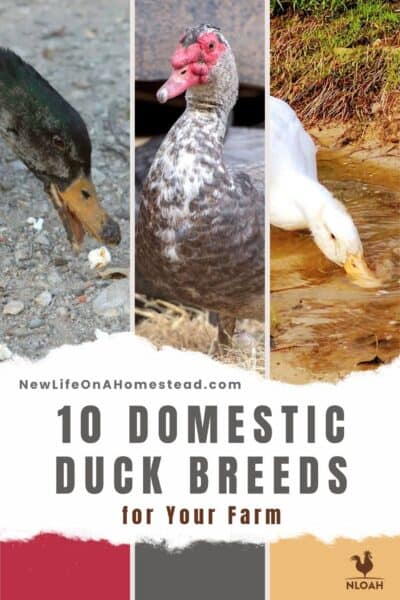
Tom has lived and worked on farms and homesteads from the Carolinas to Kentucky and beyond. He is passionate about helping people prepare for tough times by embracing lifestyles of self-sufficiency.
